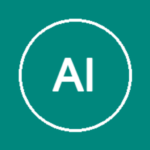The European Union: A Giant Step Forward
Imagine a world where 27 countries, spanning from the Atlantic to the Black Sea, come together under one banner, sharing common goals and values. That’s what the European Union (EU) is all about. With an area of 4,233,255 km² and a population of over 449 million people, it’s no wonder why this union has captured global attention.
The Genesis of the EU
When was the European Union established? The EU traces its roots back to the Inner Six states, which began modern European integration in 1948. By 1993, it had evolved into a supranational political and economic union with a nominal GDP of around US$16.6 trillion—approximately one-sixth of global nominal GDP.
Key Milestones
The journey to the EU we know today is filled with significant milestones. From the Treaty of Paris, which created the European Coal and Steel Community in 1952, to the Maastricht Treaty, which established the EU in 1993, each step has been crucial. The union has grown through the accession of 22 more states from 1973 to 2013, with countries like Denmark, Ireland, and the United Kingdom joining the communities.
Expansion and Challenges
The EU’s expansion hasn’t come without its challenges. The UK’s departure in 2020 marked the first time a member state left the union, raising questions about the future of this supranational entity. However, ten countries are currently aspiring or negotiating to join, signaling ongoing interest and commitment.
Structure and Governance
The EU is governed by seven institutions: the European Parliament, Council of the European Union, European Commission, Court of Justice of the European Union, European Central Bank, and European Court of Auditors. Each plays a unique role in ensuring that the union functions smoothly.
Key Institutions
The European Commission, for instance, acts as the EU’s executive arm, legislative initiator, and guardian of treaties. It has 27 commissioners appointed by member states to represent EU interests. The European Parliament, on the other hand, consists of 705 directly elected members who serve five-year terms.
Judicial Branch
The judicial branch is headed by two courts: the Court of Justice and the General Court. These institutions ensure that EU law is interpreted and applied uniformly across all member states. The Court of Justice of the European Union (CJEU) is particularly significant, as it acts as an administrative and constitutional court between EU institutions and Member States.
Economic and Social Policies
The EU’s economic policies are vast and varied. From the Common Agricultural Policy (CAP) to the Single Market, which involves the free circulation of goods, capital, people, and services within the union, the EU aims to create a level playing field for all member states.
Energy and Climate Change
The energy sector is another critical area. The EU has set ambitious goals for renewable energy, aiming for 20% by 2020 and 55% GHG emissions reduction by 2030. The European Climate Law, passed in 2021, further solidifies these commitments.
Security and Defense
The EU’s security and defense policies are also evolving. With the NATO membership of 23 EU members and initiatives like the ReArm program, the union is increasingly focused on enhancing its military capabilities. The European External Action Service (EEAS) serves as a foreign ministry, while agencies like Frontex combat illegal immigration and human trafficking.
Cultural and Social Policies
The EU’s cultural policies are equally diverse. From supporting orchestras to promoting media freedom, the union aims to foster a rich tapestry of cultures within its member states. The flag of Europe, with its 12 golden stars on a blue background, symbolizes unity and perfection.
Human Rights and Equality
The EU is committed to human rights and equality. It has signed the European Convention on Human Rights and promotes global abolition of the death penalty. The Motto ‘United in Diversity’, adopted in 2000, encapsulates this commitment.
Conclusion
The European Union is a complex yet fascinating entity that continues to evolve. From its humble beginnings to becoming an emerging superpower, the EU has come a long way. As it faces new challenges and opportunities, one thing remains clear: the union’s future is intertwined with the destiny of Europe itself.

You want to know more about European Union?
This page is based on the article European Union published in Wikipedia (retrieved on March 8, 2025) and was automatically summarized using artificial intelligence.






